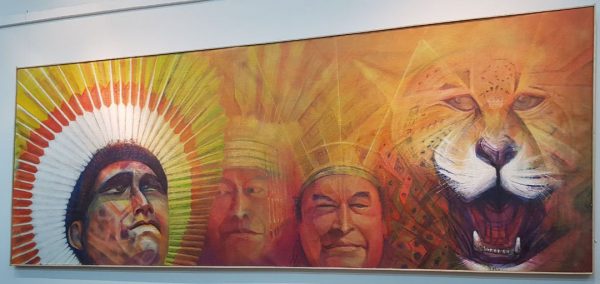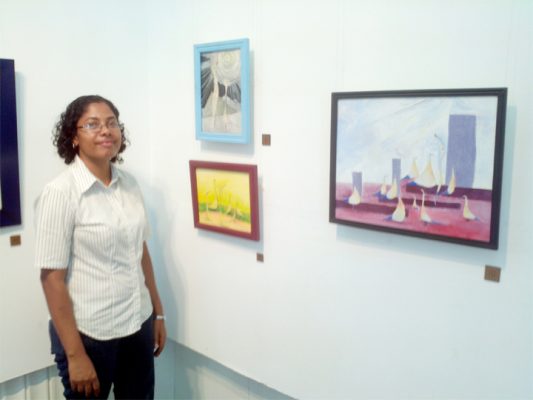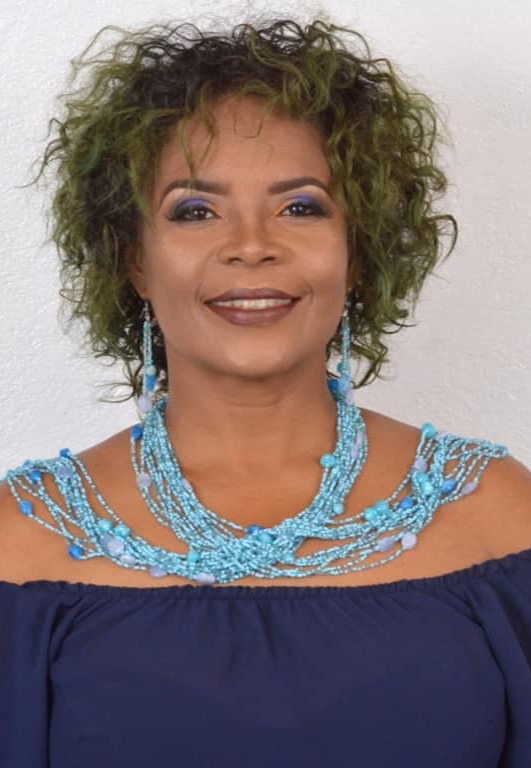Carol Fraser is a talkative but thoughtful ‘creative spirit’ who comes across as surprisingly blunt about the condition of women artists. She is as well, unpretentious about what she believes is the underachievement of the Guyana Women Artists Association (GWAA) of which she has been president since March of last year and which she believes has, during the 31 years of its existence, undergone a considerable metamorphosis.
She has long been persuaded that art as a creative pursuit has been a prisoner of gender bias. It is not, she says, that women artists do not match and even sometimes surpass the talents of their male counterparts; the reality is that even casual comparisons suggest that the work of the male artist enjoys both more attention and greater recognition. Due to no fault of its own the GWAA (as distinct from the works of the country’s renowned women artists) has been a considerable underachiever.
The Association, she says, has around 30 members living and working mostly across coastal Guyana, a condition that all but excludes women artists from indigenous communities, a travesty she says, since the contribution of Amerindian women to the national creative treasury can hardly be questioned. This, she says, is a fault line that communicates an altogether false impression of just what comprises Guyanese women’s art, an anomaly which she believes can only be corrected through robust national intervention to afford the art of the country’s indigenous women its rightful place.

Afterwards, she proceeds to ‘paint’ on a much broader canvas, pointing to the essential differences between what she believes was women’s art of a generation or two ago and what obtains these days. She is careful to not be dismissive of the talents of the preceding generations as she talks about the era of “art as leisure,” the days “when women could simply situate themselves in an ideal environment and draw or paint,” knowing that their material needs were being taken care of. “These are much more the days of the working women artist,” she says, “Women with children and bills to pay, so that for them, art has become a matter of livelihood rather than leisure.” Accordingly, she says, the themes and subjects of much of the contemporary women’s art reflect their experiences. Some of the work is much more reflective of things that they deal with in their daily lives.
In much the same way Carol believes that the membership of the Women Artists Association has changed. “Most of the women in those days were housewives [and] professional women teachers. These days, the Association comprises more working class women.” What has persisted is the fact that women artists still use a broad range of media… canvas, pen and ink, sculpture, photography etc. Fine art, she says, is “the contemporary pot boiler.”
The value of the Association’s December 2018 thirtieth exhibition, she says, has to do

with the glimpses that it offered into the overall contribution of women’s art to the local creative culture over the years, a contribution which she says has not been reciprocated either by popular patronage or by the contribution of the state. In a country like Guyana, she says, creativity can only really grow and prosper if it is driven by some measure of commercial support and by the backing of the state.
Accordingly, and for all the “noise” that sometimes attends discourses on Guyanese creativity, she believes that the status of Guyanese women artists, whatever the medium through which they express themselves, has been “watered down” by a kind of national indifference. Here, she contends that if the female creative community is to grow and prosper, lip service has to be converted into a greater degree of local patronage. “It should not take the visitor to Guyana who will spend real money on acquiring some artistic piece to cause the creator of it to feel a sense of self-worth as an artist. Local support as well as local recognition very often means much more.”






